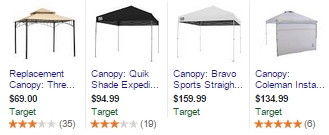When you talk to different entrepreneurs and successful online marketers and ask them for advice, there seems to be one piece they all agree on: get help!
Not mental help (though that may help some days), but rather help with what you are doing. In other words outsource your work!
What is outsourcing?
What exactly is outsourcing? Well, it’s the act of hiring someone, a freelancer, to do a particular job.
It’s quite different from hiring an employee, as generally contracts are on a single “project” basis, whether that project is to write a single 1,000 word article or work 20 hours a week indefinitely doing admin.
With the growth of the internet, the online jobs market has boomed, and there are numerous websites that you can frequent to find freelancers. Some of these are very general in nature, and some cater to more specific needs and niches.
Why should you outsource?
Barring heeding the advice of successful entrepreneurs, there are numerous reasons why you should consider outsourcing:
To free up time
This is the big one when it comes to reasons to consider outsourcing.
By getting others to handle more of the menial and repetitive work, you free up your valuable time.
This time can be spent on more important things, such as aspects of the business you love, growing the business, spending time with family and friends, experiencing life, trying new projects, and much more.
Remember, you can earn more money, but you can’t earn more time!
To get help with work
This is similar to freeing up your time, but in that sometimes you will have simply too much on your plate to get everything done, and it will just pile up.
Hiring one or more freelancers to deal with different aspects of your work can help bring this workload under control.
When you need particular skill-sets
Let’s face it, we do not and cannot know everything. In fact, being a jack-of-all-trades is often detrimental, as it makes you believe you can cope with everything and instead you end up being pulled in multiple directions at once.
As well as that, sometimes others just know more about something than you do. If my car breaks down, I for one would go to a mechanic, because the extent of my car knowledge doesn’t extend beyond my gas tank.
If I need a suit, I’ll head to a tailor. Why then not do this with aspects of a business?
If your site looks crappy, hire a designer. If you need certain site functionality, hire a developer. If you struggle to write more than 200 words a day, hire a writer.
Very little red tape
Another great reason to hire a freelancer, is the lack of red tape: you say you want X thing done, agree a price and timescale, they do it, you pay them. Job done!
There’s no lengthy contracts, no unions, no healthcare, no taxes to deal with – the freelancer has to deal with any of that which is applicable to them, all you ned to do is pay them when the job has been done to satisfaction.
Is outsourcing right for you?
Only you can answer that, but generally if you are lacking a particular skill set, or are struggling with work load, and you have the cash to spare, then outsourcing is a must.
The cons of outsourcing
While outsourcing is a great way to get things done, there are a few issues with it that need to be noted and thought about, both before jumping in and even while you are hiring people.
Cost
Cost is definitely a problem for most people beginning to outsource work. How do you find the right skills, the right quality for the right price?
Generally, people want to pay peanuts for outsourcers, and with international workforces available and happy to work, paying peanuts isn’t hard.
Paying very little for the work is often a backwards way to handle things though. Poorly paid workers will often produce poor quality work, and you often end up having to pay to get it redone by someone with more skill.
You can still find quality workers for less than the norm, but it’s like finding a diamond in the rough: you have to work for it.
Quality
As mentioned above, quality can be an issue, and really it doesn’t always matter whether you are paying below or above the average for the job. Sometimes people advertise they can do something, but simply under perform.
To help counter this, really review the potential freelancer. Check out their previous work and clients, look for testimonials as well.
Most decent websites for finding freelancers will also allow you to ask questions and request samples; make use of these features as they will help you quickly filter out the unsuitable.
Of course sometimes you simply need to take a risk. The best advice here is to give them a small job to assess their work, and “fire” them if it’s not suitable.
Don’t be afraid to fire a freelancer, the worst thing that you can do is hang on to dead weight, it will merely cost you in sanity and pocket.
Initial time cost
To begin with you might feel that you are spending more time looking for the right freelancer than you are doing your own work!
This is always how it goes, but fear not because once you have hired a few freelancers, you will quickly realize just from profiles and their portfolio which ones are more likely to fit with your needs.
It won’t be exact, there will still be ones you need to fire, but that’s how it goes. Persevere to begin with and reap the rewards later down the line.
Where to find freelancers
There are hundreds, perhaps thousands of places on the internet where people sell their skills and expertise and it can often be daunting to even start looking.
I’ve outlined below a few of the key sites that should get you off to a good start.
There are two broad types of freelancer sites (I’m not talking individual here, but more marketplace type sites): general and niche.
General freelancer sites
These sites cover pretty much every type of job that can be done online. Think of them as malls of the freelancing world.
Fiverr.com
If you need something doing, and you need it to be cheap, then Fiverr is a good place to start. IT offers a variety of work types from graphic design to videos, article writing to programming.
The price is often the only reason people use Fiverr, as the cost starts at $5 bucks per “gig”. They do allow their sellers to offer increased pricing for additional or more complex work, which can work out very well for everyone concerned.
Personally I have never had much success with Fiverr, often finding the quality matching the price, but your mileage may vary.
Upwork
This is the combination site for Elance and Odesk, and I often call it the Amazon of freelancers, because it covers such a wide variety of work types and has such a large number of freelancers.
You can also find a wide variety of skill levels here, but even in the broad bands they segment people into the skill range varies.
It differs from Fiverr in that you generally post a job and people will apply and bid on the job. This means you can find people who are interested in what you are trying to get done, once you cut through the chaff that is.
Freelancer.com
Freelancer.com is very similar to Upwork, being a large marketplace where you post a job and have people apply for it. In fact Freelancer, was certainly the biggest one before Elance & Odesk merged into Upwork, so now it’s debatable. Either way, there are a lot of freelancers there hungry for work.
Guru.com
This is another large marketplace, but has a smaller focus, mainly supplying freelancers in the IT, development, design and writing areas.
Specific freelancer sites
While the general freelancers sites are good, if you need a specific thing doing, you may want to look at a marketplace that caters solely to that niche. Here are some examples, though it’s far from an exhaustive list.
Writing
There are many writing services out there, but let’s focus on article writing. The 3 most popular that I’m aware of are:
Each has its own pros and cons, but they cater purely to those wanting to find writers.
WordPress
If you are looking for someone to help with your WordPress site, whether it’s a small job or a custom plugin build, the following sites can help:
Graphic Design
When you need some beautiful designs it’s a good idea to check out the freelance networks that focus on graphic design.
- 99designs is a design contest website, where a brief is given and a price, and multiple designers submit work and you choose the one you want from the selection.
- DesignCrowd is similar to 99designs, with Design Crowd, you post a brief for free and users submit a design for you.
- Behance is a network for creatives to showcase their work, but also has a jobs section. It costs a lot to post a job here.
- Dribbble is very similar to Behance and started out as a site to showcase design work, but now allows job posting. Dribbble is a great resource for finding skilled designers, but does cost a lot to post a job, unlike a lot of other sites.
Other sites
There are plenty more sites out there, catering to a wide and narrow niche alike. Google is your friend here, but make sure to do your due diligence with both the site and potential hires.
How to hire a freelancer
Each freelancing site has different ways to go about hiring, but in general you would follow this procedure:
Write a brief
A brief is a description of the job you want to get done. It should be relatively short but cover the details as much as possible.
For example “I want an article written” won’t yield many responses, but “I would like a 1,000 – 1,500 article for an online marketing website. Topic to be provided to the successful applicant” would make a better brief.
You can and should provide requirements for the job. To keep with the writing example you could say:
- I require a native or fluent English speaker
- Articles must be unique, not spun, and must pass Copyspace plagiarism checker
- Article must be a minimum of 1,000 words max. 2,000 words
The more details you can provide the better, but of course the exact details such as the article title, can be excluded until you have a successful applicant.
If the system allows questions set some, otherwise set some in the job posting itself.
Questions can be used to gauge the skill and appropriateness of the applicant so make sure to set some that would directly help with this.
Alternatively, or in conjunction with, ask for samples of previous work.
Pricing
For me, one of the hardest things to do is set a price, and one of the best things to do is set a price and learn from it. Most applicants will bid on your pricing anyway and you can encourage that in the job brief.
You will get pricing wrong, but after a while you will learn how to set and accept a fair price.
I would recommend searching the very site you are posting on for similar jobs to see what price range they posted at, as it will give you a ballpark figure to work with.
Most networks like Upwork also allow you to modify the price (with agreement from both parties) after the fact, as well as give bonuses etc.
Set a price, whether hourly or a fixed price, depending on the job and post the job brief.
Choosing an applicant
Once posted, you will then start to receive applications. Personally I recommend leaving the job open at least 24 hours before you even look at the applicants as it will give people time to see the job posting and apply for it.
Once you start looking at applicants, quickly go down the list and discard any that obviously won’t be suitable for the job, for example:
- Anyone without the appropriate skills
- Anyone with poor spelling or grammar in their application
- Anyone that failed to answer or incorrectly answered any questions you set.
Once that is done you can start fine combing through the other applicants. If need be contact them for more information.
Depending on the task your are hiring for, it may be worth hiring multiple freelancers and giving them all the same or similar small job. The one/s that succeed with it should be hired, the others fired.
Communicate
I really can’t stress this enough: communicate with your freelancers!
Normally they only have the brief to go on, so make sure you provide as much information as they need to get the job done, and make sure they know to come ask a question if they are unsure; it’s better to reply a couple of times to questions than have a poor job done and have to hire someone else.
I hired a freelancer, now what?
Well, hopefully all went well and you got your work done satisfactorily and for a fair rate for both parties.
If so, then make sure you rate them on the site you hired them from as this will help them get work later on.
Just remember to be fair and honest.
Then, hire them again! The whole point of outsourcing is to make sure that whatever you consider menial or difficult tasks are handled by someone else.
If your experience didn’t quite go as planned, don’t worry, it happens. Pick yourself up, and go find someone else. You may have to go through a few freelancers before you find ones you like that can do the job.
The Bottom Line
Outsourcing your work by hiring a freelancer is really the only way to go if you want to grow your business and free up some of your time, without taking on an employee.
Yes it has some risks associated with it, but no more than most things that you do when running your own business.
Take your time, ask them questions before hand, give them a test (cheap) project to do first and never be afraid to fire them.







